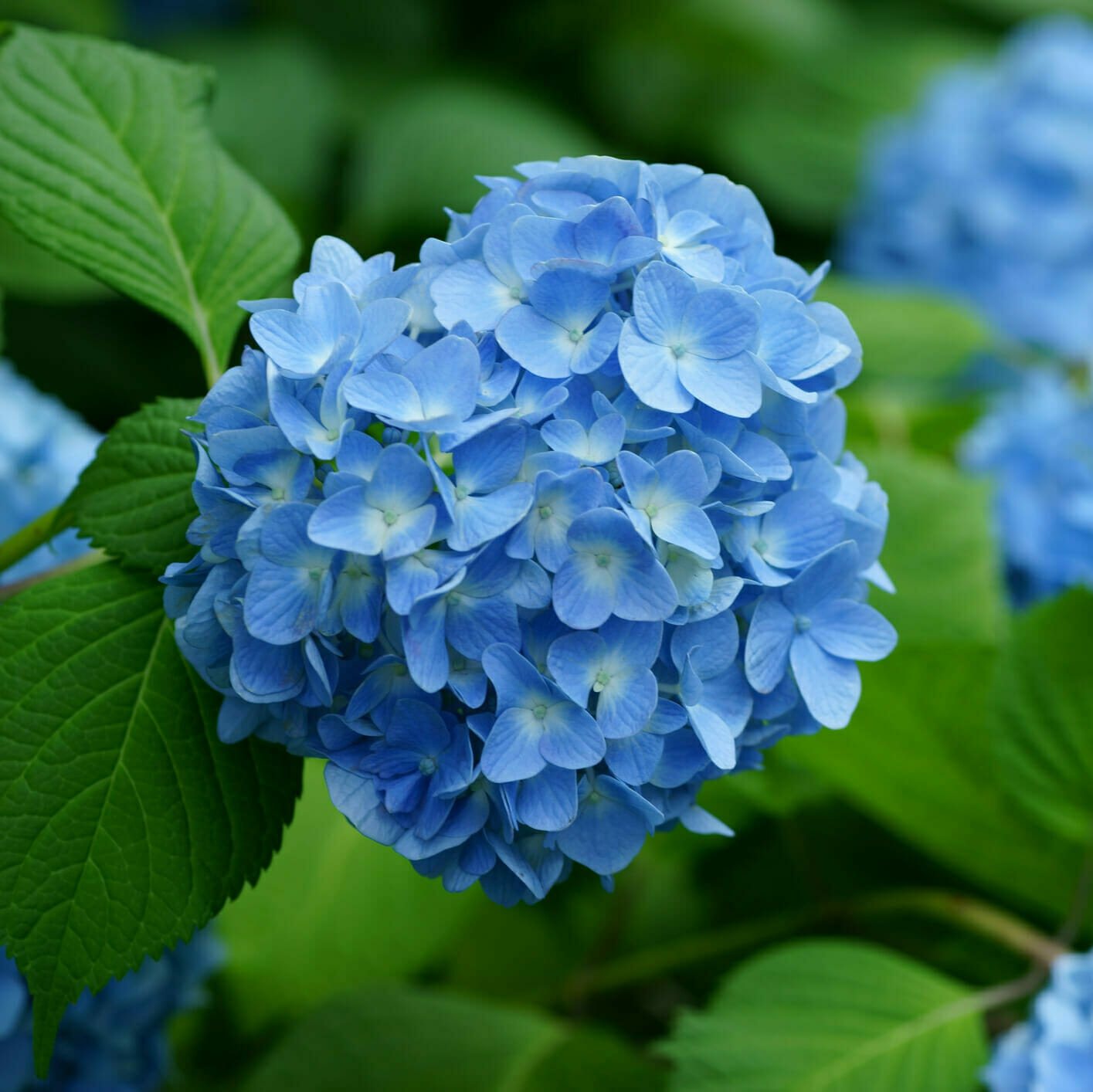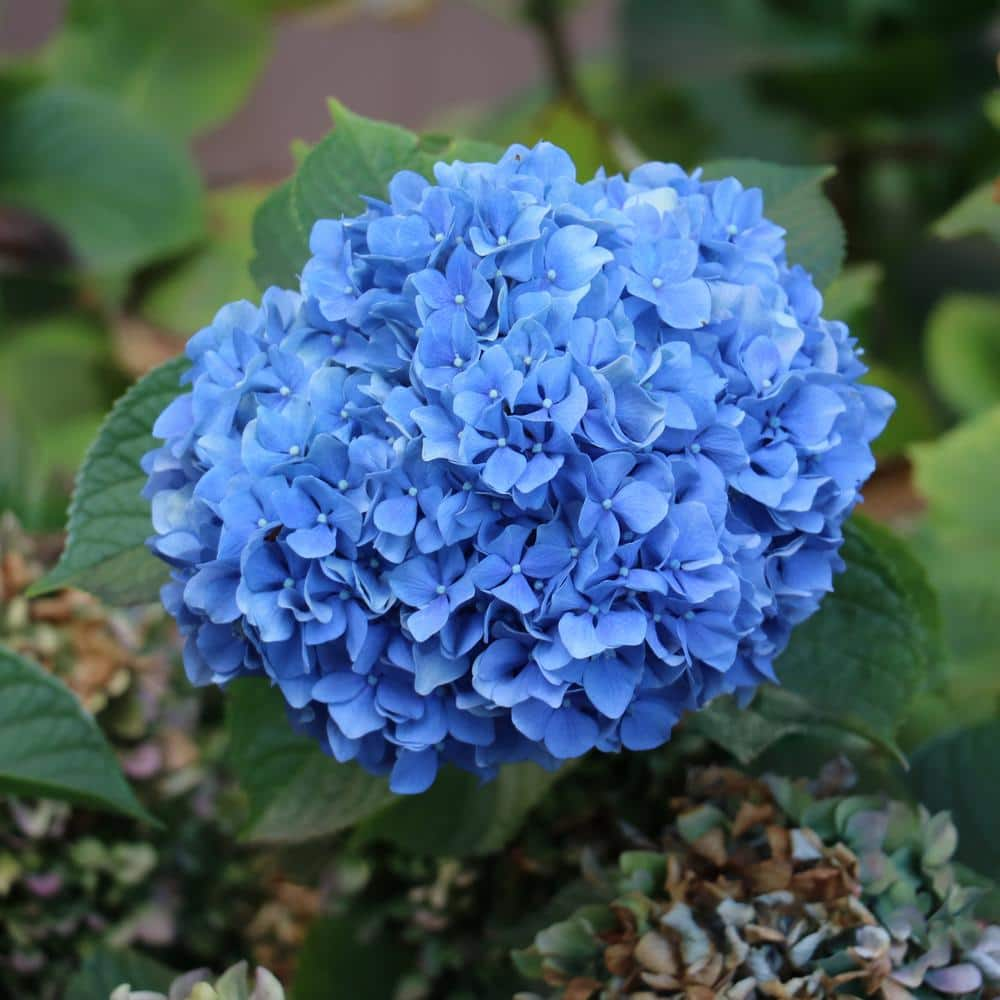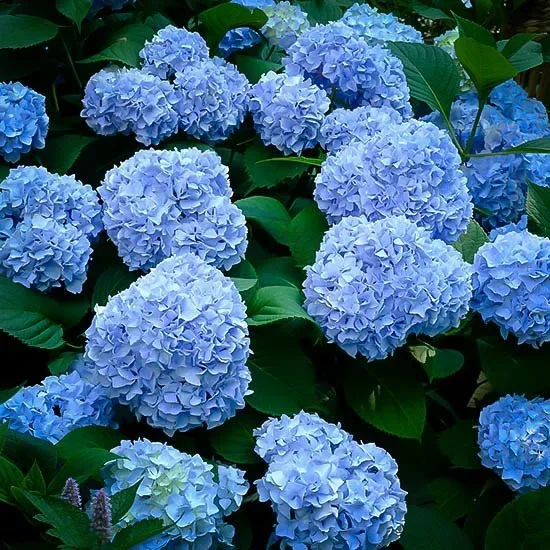The Ultimate Guide To Growing Blue Hydrangea Plants
The Ultimate Guide to Growing Blue Hydrangea Plants
Hydrangeas are beautiful flowering shrubs that can add a touch of elegance to any garden. They come in a variety of colors, but blue hydrangeas are some of the most popular. If you're looking to grow blue hydrangeas in your own garden, there are a few things you need to know.
In this guide, we'll discuss everything you need to know about growing blue hydrangeas, from choosing the right variety to caring for your plants. We'll also provide some tips on how to get the bluest flowers possible.
Choosing the Right Variety
There are many different varieties of blue hydrangeas available, so it's important to choose one that is suited to your climate and growing conditions. If you live in a warm climate, you'll want to choose a variety that is tolerant of heat and humidity. If you live in a cooler climate, you'll want to choose a variety that is hardy to cold weather.
Some popular varieties of blue hydrangeas include:
- Bigleaf hydrangea (Hydrangea macrophylla): This is the most common type of blue hydrangea. It produces large, showy flowers that can reach up to 12 inches in diameter. Bigleaf hydrangeas are hardy to USDA zones 5-9.
- Smooth hydrangea (Hydrangea arborescens): This type of hydrangea is smaller than bigleaf hydrangeas, but it is just as beautiful. It produces clusters of white, pink, or blue flowers that bloom in the summer. Smooth hydrangeas are hardy to USDA zones 3-8.
- Mophead hydrangea (Hydrangea paniculata): This type of hydrangea produces large, rounded flower clusters that can reach up to 18 inches in diameter. Mophead hydrangeas are white, pink, or blue. They are hardy to USDA zones 3-8.
Planting Your Blue Hydrangeas
Once you've chosen the right variety of blue hydrangea, it's time to plant your plants. Blue hydrangeas prefer full sun to partial shade. They also prefer moist, well-drained soil.
When planting your blue hydrangeas, dig a hole that is twice as wide and deep as the root ball. Amend the soil with compost or peat moss to improve drainage and add organic matter. Place the hydrangea in the hole and backfill with soil, tamping down gently to remove any air pockets. Water the hydrangea thoroughly.
Caring for Your Blue Hydrangeas
Blue hydrangeas are relatively easy to care for. They need regular watering, especially during hot, dry weather. You should also fertilize your hydrangeas once a year in the spring with a balanced fertilizer.
In the fall, you can prune your blue hydrangeas to remove dead or damaged branches. You can also prune them to shape the plant or to control its size.
Changing the Color of Your Blue Hydrangeas
The color of blue hydrangeas is affected by the pH of the soil. In acidic soil (pH of 5.5 or lower), blue hydrangeas will produce blue flowers. In alkaline soil (pH of 7.5 or higher), blue hydrangeas will produce pink flowers.
If you want to change the color of your blue hydrangeas, you can adjust the pH of the soil. To make the soil more acidic, add sulfur or peat moss to the soil. To make the soil more alkaline, add ground limestone or wood ash to the soil.
It may take several weeks or months for the pH of the soil to change and for the flowers on your hydrangeas to change color.
Enjoying Your Blue Hydrangeas
With proper care, your blue hydrangeas will reward you with beautiful flowers for many years to come. Enjoy!
Do you love the beauty of blue hydrangeas but don't know how to keep them blue? Well, you're in luck! The has a wealth of information on how to grow and care for blue hydrangeas.
From tips on choosing the right soil to advice on how to adjust the pH, the has everything you need to know to keep your hydrangeas blue and blooming all summer long.
In addition to its comprehensive guide to blue hydrangeas, the also offers a variety of other resources, including:
- A blog with gardening tips and advice
- A forum where you can connect with other gardeners
- A store where you can buy blue hydrangea plants and supplies
So what are you waiting for? Visit the today and learn everything you need to know about growing and caring for blue hydrangeas!
FAQ of blue hydrangea plant
1. Why are my hydrangeas not blue?
The color of hydrangea flowers is determined by the acidity of the soil. In alkaline soil, hydrangeas will bloom pink or purple. To make your hydrangeas blue, you need to lower the pH of the soil. You can do this by adding peat moss, sulfur, or aluminum sulfate to the soil.
2. How do I care for a blue hydrangea plant?
Blue hydrangea plants need full sun to partial shade and well-drained soil. They are relatively drought-tolerant, but they will appreciate regular watering during dry periods. Blue hydrangeas also benefit from being fertilized in the spring and fall.
3. How do I deadhead blue hydrangeas?
Deadheading is the process of removing spent flowers. This will encourage the plant to produce more flowers. To deadhead a blue hydrangea, simply pinch off the spent blooms with your fingers. You can also use a pair of scissors to make a clean cut.
4. How do I overwinter blue hydrangeas?
In most climates, blue hydrangea plants can be overwintered outdoors. However, in colder climates, you may need to protect them from the cold. You can do this by covering the plant with a burlap sack or a layer of mulch.
5. How do I propagate blue hydrangeas?
Blue hydrangeas can be propagated by taking cuttings. To do this, cut a 4-6 inch stem from the plant in the spring or fall. Remove the lower leaves from the cutting and dip the end in rooting hormone. Plant the cutting in a pot of moist potting soil and keep it in a warm, shady location. The cutting should root in about 4-6 weeks.
Image of blue hydrangea plant
5 different images of "blue hydrangea plant" from Pinterest:
- A large, full bush of blue hydrangeas in bloom. The flowers are a deep blue color and are arranged in large clusters. The bush is surrounded by green leaves.
- A close-up of a single blue hydrangea flower. The flower is a light blue color with a white center. The petals are delicate and slightly ruffled.

- A row of blue hydrangeas planted along a walkway. The hydrangeas are in full bloom and their flowers are a vibrant blue color. The flowers are surrounded by green leaves.

- A blue hydrangea plant in a pot on a patio. The hydrangea is in full bloom and its flowers are a deep blue color. The flowers are surrounded by green leaves.

- A bouquet of blue hydrangeas. The hydrangeas are in full bloom and their flowers are a light blue color. The flowers are arranged in a vase with other flowers and greenery.

Post a Comment for "The Ultimate Guide To Growing Blue Hydrangea Plants"